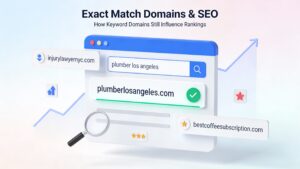How GEO Is SEO: Why Generative Engine Optimization and Search Engine Optimization Are Fundamentally Intertwined
In today’s digital landscape, talk of “GEO” (Generative Engine Optimization) often sounds like a futuristic leap from classic SEO (Search Engine Optimization). Many marketers and business owners are left wondering: are these radically different disciplines, or is GEO just the next evolution of SEO? After years of hands-on experience tracking how search and AI-powered content synthesis have morphed, I’ll make it unmistakably clear: GEO is SEO—not just a cousin, but its continuation, retooled for the world of large language models (LLMs) and AI-synthesized answers.
Let’s break down why GEO is really a rebranding of SEO’s core principles, examine the technology shift (and why it still comes back to PageRank and authority), highlight the practical tactics that carry over, and explore how understanding this “merge” is your best bet to win big in the coming era of search.
Table of Contents
ToggleWhat is GEO (Generative Engine Optimization)?
Home » SEO FAQ Terms » What is GEO (Generative Engine Optimization)?
What is Generative Engine Optimization?
GEO, often misunderstood, refers to Generative Engine Optimization. It’s centered on optimizing content for maximum inclusion in AI-generated results—meaning visibility in responses given by chatbots or answer engines rather than just in traditional search rankings. The critical factor isn’t backlinks or technical tricks, but having content, brands, or sources referenced semantically within authoritative, high-traffic sources that LLMs and AI tools crawl. However, skeptics should note: many AIs still rely on search engines for data.
What is GEO in SEO
Within SEO circles, GEO means going beyond optimizing for Google’s blue links. Instead, it’s about being cited, referenced, or featured in AI platforms like ChatGPT, Perplexity, or Google’s SGE overviews. Traditional SEO chases clicks, but GEO chases mentions in AI outputs. In practice, this usually means nurturing brand visibility and getting referenced on high-authority, well-cited sites—yet testing reveals that LLMs often pull directly from standard search results anyway; so, hype cautiously.
What are GEO and AIO?
GEO aims at visibility inside generative AI answers, while AIO (AI Optimization) targets AI-friendly content and structures for these tools. They are often lumped together with AEO (Answer Engine Optimization), but the distinctions blur in practice. All these methods overlap with classic SEO, but the nuance is that AIO and GEO want content directly cited as answers or sources. Still, much advice is speculative; always verify claimed differences and check which engines actually use independent indices.
How is GEO different from SEO?
GEO differs from traditional SEO because it prioritizes getting referenced by LLMs and AI models rather than ranking highest on a typical search results page. While SEO focuses on optimizing content, backlinks, and technical structure to climb search rankings, GEO aims for inclusion or citation in AI responses, often by boosting brand mentions and semantic prominence. The catch: many AIs grab their answers from search engine results anyway, so the distinction isn’t always as concrete as claimed.
What is llmo and how does it differ from traditional seo?
LLMO (Large Language Model Optimization) is about making your content more understandable and likely to be included in AI-generated answers. Unlike SEO—which focuses on keywords, tags, backlinks, and ranking signals—LLMO emphasizes clarity, factual depth, and getting referenced by reputable domains. LLMs don’t rank links; they select passages or sources that address user queries directly. LLMO is less about manipulating algorithms and more about aligning with the informational needs of language models.nolenwalker+2
How does geo work?
GEO works by strategically placing your brand and content within sources that AI models are likely to reference when generating answers. This means targeting inclusion on authoritative websites, popular lists, and public datasets rather than just obsessing over keyword rankings. Core tactics involve PR, thought leadership, and semantic relevance—essentially making your business part of the conversation the AI models “see.” Still, practical testing shows many AI tools mirror search engine results quite closely
How does LLM SEO work?
LLM SEO—optimizing for large language model inclusion—requires a shift from keyword stuffing to creating clear, accurate, and deeply contextual content. Focus on comprehensive answers, organized structures, and supporting data, as LLMs evaluate passages for semantic fit rather than entire documents for ranking signals. Schema markup, FAQs, and refreshed, credible data are useful. Ultimately, LLM SEO is about being the “right answer” for AI prompts, not just ranking high for particular keywords.
What are the key differences between traditional SEO and AI search optimization?
Traditional SEO is all about moving up search engine results through technical improvements, backlinks, and keyword strategies. AI search optimization, on the other hand, prioritizes relevance and authority at the passage or entity level—AI models look for concise, clear answers and trustworthy mentions rather than just ranked links. Performance metrics shift from organic clicks and SERP positions to frequency of AI citations, branding consistency, and topic coverage.
How does AI visibility differ from traditional SEO?
AI visibility means being picked as a cited source or answer inside an AI-generated context—much more about in-depth coverage, semantic linking, and strong brand presence than sheer search rankings. Unlike SEO, which drives traffic via clicks, AI visibility may never send visitors to your page but cements your authority when people ask questions to LLMs.
What does GEO mean?
The term “GEO” is often thrown about, but in practice, it references strategies for gaining visibility in AI-generated outputs. The idea is to enhance your mention frequency and authority so that engines using generative models pull your brand or content as the answer. However, it’s crucial to remember that many LLMs currently pull from those same SEO-optimized sources—so for now, GEO and SEO tactics may yield overlapping results in most cases.
What is LLM SEO?
LLM SEO is the practice of developing and optimizing content so it is specifically referenced, paraphrased, or featured by large language models like ChatGPT, SGE, or Claude. Key strategies include writing in a natural, conversational tone, covering questions exhaustively, and using clear FAQ formatting and schema. The goal is not just Google rankings, but being actively included in the answers given by AI models—potentially shifting the focus from clicks to reach and influence.
GEO: The Next Layer on Top of Classic SEO
Traditional SEO is about making web content discoverable, relevant, and authoritative in the eyes of search engines—most notably, Google and Bing. These search engines operate on immense link graphs, PageRank, keyword relevance, and technical site health. The output for users: the familiar “10 blue links” and various SERP widgets.
GEO, or Generative Engine Optimization, operates on the same foundation. The main difference? It targets not the search results pages directly, but the sources that large language models (LLMs)—like those powering ChatGPT, Perplexity, or Gemini—pull from when synthesizing answers.
But here’s the reality: LLMs are “wrappers” or overlays around the classic search infrastructure. They don’t maintain totally independent, fresh indexes. Instead, they fan out queries to Bing or Google, fetch top-ranked and authoritative web pages, and then compose, remix, and synthesize snippets for AI-generated answers.
In practice: Optimizing for LLMs means optimizing to be cited or referenced by those same core search results. SEO in, GEO out.
The Technical Glue: PageRank and Authority Remain King
The supposed “disruption” of AI search hasn’t replaced the mathematical backbone of SEO. LLMs cite sources they find through live search APIs—their starting point is Google’s or Bing’s mention- and link-based rankings.
-
If your content ranks for the right queries in Google or Bing, it will show up in the “fan out” micro-searches LLMs fire off.
-
If your site is dormant, poorly linked, or lacks authority, you won’t be in the pool of top pages AI reaches for answers.
-
LLMs are biased toward up-to-date, frequently linked, widely referenced, and technically healthy pages—the hallmarks of sites that have nailed classic SEO.
Think of GEO as the harvest of what you sow with SEO:
High PageRank, authority backlinks, optimized site structure, and evergreen content. Your “AI visibility” is the net result of your sustained SEO efforts, now funneled through the lens of generative AI.
GEO Tactics Mirror (and Extend) Core SEO Principles
So, what must you actually do to succeed at GEO? Nearly every top GEO tactic is an outgrowth of fundamental SEO, applied in a context where LLMs can remix, quote, and reshape your content into conversational, synthesized AI answers.
1. Optimizing for Authority and Backlinks
In SEO, earning backlinks is gold—these links act as votes of trust. In GEO, this effect is even more pronounced: LLMs’ “fan out” process disproportionately leans on pages that have amassed top rankings and solid reputations.
-
Action: Build link-worthy resources, secure mentions from reputable sites, media outlets, and data aggregators, and use internally linked, cluster strategies to spread and reinforce PageRank within your domain.
2. Semantic and Topical Depth
Classic SEO rewards topic clusters and coverage of the related entities and sub-questions around any given keyword. GEO makes this approach indispensable: AI engines break user questions into micro-intents (“query fan out”) and pull from the best-matching sub-pages for each.
-
Action: Don’t restrict yourself to head terms or thin content—create clusters of pages and sections that cover every aspect, variant, and question around your core topic.
3. Snippable, Structured Content
In the old SEO playbook, you vied for featured snippets and “position zero”—structured answers that Google could display directly. GEO doubles down: LLMs rip “snippets” or self-contained passages from well-structured web pages for citation in their conversational outputs.
-
Action: Use clear headings, bullet points, tables, and Q&A blocks. Make each passage answer a single sub-question distinctly, so AI can extract the right part and attribute it to you.
4. Technical SEO: Indexability, Speed, Schema
A technically healthy website is easier for both classic search engine crawlers and LLM-driven wrappers to discover and extract from.
-
Action: Optimize site speed, indexability (XML sitemaps, robots.txt), structured data (schema.org), and ensure your most valuable pages are linked from navigation and major hubs.
5. Freshness and Timely Updates
In both SEO and GEO, “fresh” content (recent posts, updated tables, current stats) outperforms out-of-date material, especially for time-sensitive topics.
-
Action: Regularly audit and update your top assets to keep facts, figures, and product information current and relevant.
Where GEO Diverges: A Shift in Output—Not Input
The key difference between GEO and SEO is the output, not the foundation. You don’t win with GEO simply by ranking high for one keyword—you win by being included in the battalion of sub-queries AI uses to construct its answers.
However, the “inputs” (trust, authority, rank, crawlability, link profile) remain just as crucial, and if anything, they’re even more important now that AI wrappers can synthesize answers across hundreds of top-performing web pages.
The Big Takeaway: GEO is SEO—Only the Audience (and Format) Has Changed
Every enduring rule of SEO—content depth, technical soundness, link building, semantic breadth—is still at the heart of GEO. But now, instead of competing for a top slot in a skin of 10 blue links, you’re competing to be seen, cited, or quoted in the synthesized AI answers of a new era.
-
SEO is how you get into the room.
-
GEO is how your voice is echoed and remixed by the most influential new “speakers”—AI search agents built on top of Google, Bing, and their knowledge infrastructure.
If you’ve mastered classic SEO, you’re ahead in GEO. Double down on link authority, structure every passage for snippetability, refresh your top content regularly—and you will thrive, however search evolves.
GEO is not a replacement for SEO. It’s its highest form—a future-ready, AI-optimized extension of the same principles that have powered the web for decades.
In the race for digital visibility, everything old is new again. GEO is SEO, evolved—not replaced. Master one, and you’re already winning with the other.





